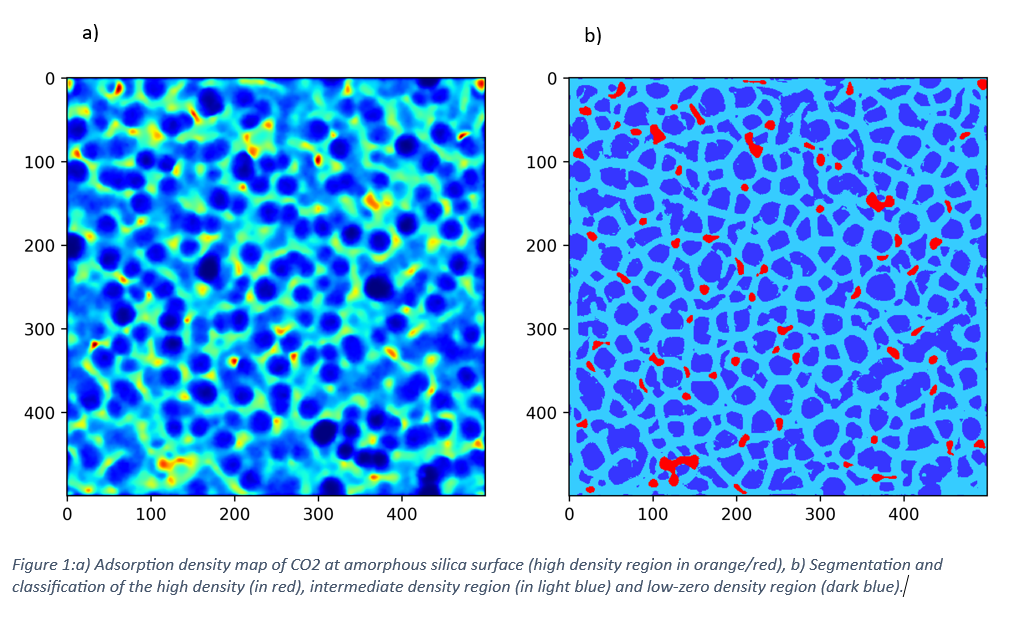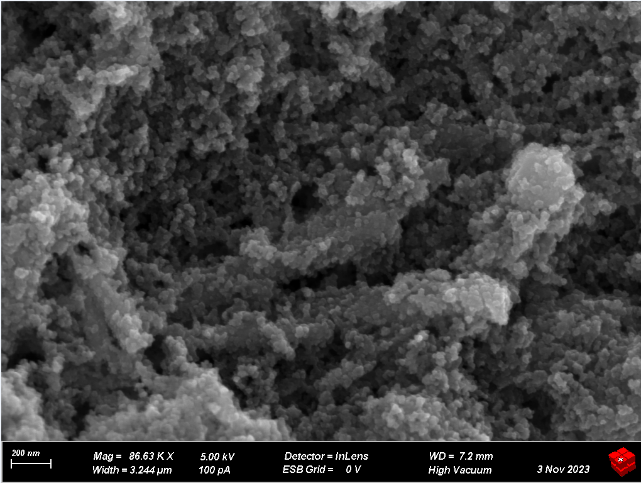Sorption and catalysis at nanosurfaces
Many materials in nature are amorphous; furthermore, such materials can also be produced from thermal treatment of waste and therefore their reuse can have an important impact in the development of a circular economy. For example, amorphous materials can be efficiently used as adsorption and catalytic substrates. Their disordered structures generate physicochemical heterogeneities which can be exploited for enhancing the adsorption and conversion of fluids.
At our lab, we focus on the multi-scale in-silico characterization of amorphous substrates for adsorption and catalytic applications. We apply atomistic modelling, such as Molecular Dynamics (MD) simulations and Quantum Chemical (QC) calculations (also combined with enhanced sampling techniques) to study adsorption and reactions at the nanoscale. Machine Learning (ML) algorithms are used to characterize the complex physicochemical heterogeneity of amorphous substrates and to develop kinetic models based on the properties predicted at the nanoscale.
We currently focus on applying MD simulations to study the adsorption of CO2 at the amorphous silica surfaces. We show how the physicochemical heterogeneity of the amorphous surface (i.e., surface roughness and presence of coordination defects), enhances the gas adsorption (Figure 1a). We use ML to segment (Figure 1b) and characterize the adsorption landscape of CO2 at the silica surface.


Functionalized porous sorbent materials
The SCENE project, a collaborative effort under the ETH-Domain umbrella, addresses the transition to net-zero greenhouse gas emissions. The Laboratory for Computational Engineering (LCE) is specifically engaged in the work package focused on the advancement of direct air capture (DAC), a negative CO2 technology.

The research task involves research on functionalized porous sorbent materials, such as silica gels, zeolites, metal-organic frameworks, and their composites, characterized by hierarchical pore structure and surface chemistry. The characteristics of the sorbent material must allow for significant sorption of CO2 under its low partial pressure and ambient humidity. Because of the scarcity of commercial materials that could be used for DAC application, the potential sorbent materials are developed, synthesized, and characterized in the LCE laboratory in collaboration with the partners (Syncat group; Paul Scherrer Institut, Building Energy Materials and Components Laboratory; Empa).
The laboratory is involved in understanding the process's mechanisms and dynamics based on experimental data, supplemented by state-of-the-art molecular dynamics and density functional theory simulations. The objective of this holistic approach is to tune carbon dioxide and water co-adsorption on potential sorbent materials to meet input requirements for the processes following the separation step while maintaining the energetic feasibility of the DAC process.

